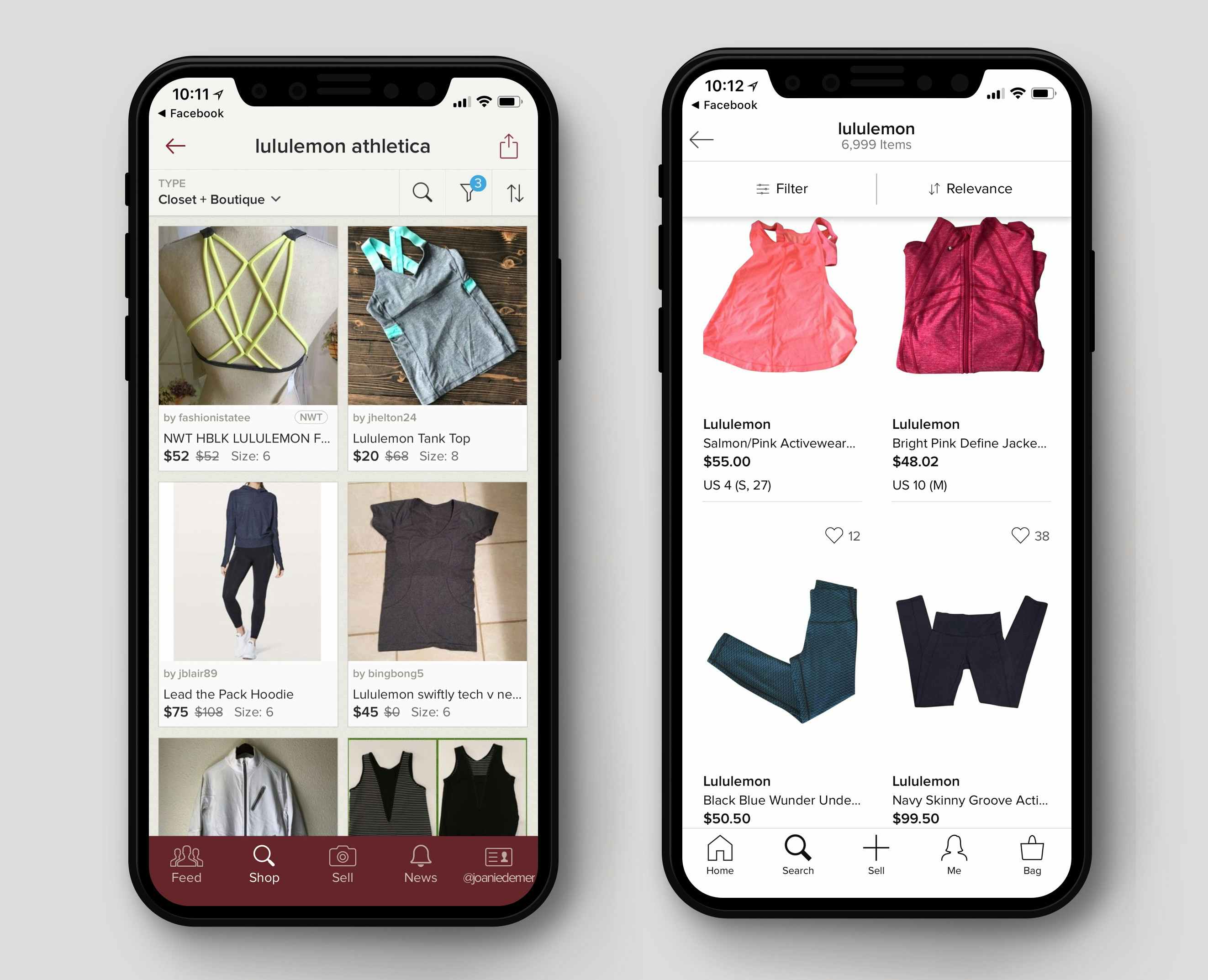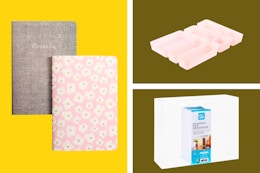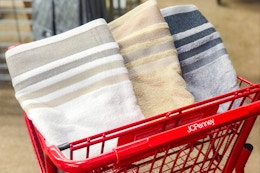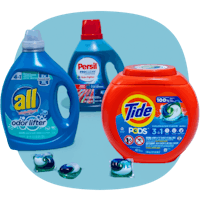You’ve finally done it — cleaned out your closet, purged old kids’ clothes and shoes, and even convinced your partner to participate in the editing process too. Now what? If you’re wondering “Where can I sell my clothes?” then you’ve come to the right place for the most comprehensive guide. Part of being a savvy shopper is also knowing what the longevity of a product is and what the resale value you could be.
Once you know that, you should also be aware of how you can make the most money off your stuff should you choose to resell it, which is exactly what we recommend. Before you try any of these places out, one word of advice (though you can get more reselling tips here): Always wash and de-wrinkle your items prior to selling. Presentation is everything, especially when it comes to pre-loved clothing.
Download the KCL app to get the latest money-saving ideas, tips, deals, and coupons.
Where can I sell my clothes online?

Poshmark
This one is at the top because as a buyer, it’s my favorite. It’s ideal for mid-range retailers like J.Crew and Nike — I don’t see a lot of brands you may find at a discount retailer sell well, though vintage can be promising. Poshmark considers itself a social marketplace by encouraging buyers and sellers alike to attend selling events, which can be a great way to get your stuff out there. When you sell something under $15, Poshmark will take a flat commission of $2.95. For sales of $15 or more, they take 20% and you keep 80%. When you get ready to ship, Poshmark sends you a prepaid shipping label to make things as easy as possible.
Pro tip: For the best chance at success, remember to share your listings often because the default setting when people search is “Just Shared.”
Tradesy
Tradesy, which is ideal for designer items, is similar to Poshmark in that you list items yourself and when they sell, you either pay a flat fee ($7.50 for items $50 or less) or a percentage (19.8%) for commission. They both also have the buyer pay shipping fees and provide the seller with a prepaid shipping label — though Tradesy also provides a box. Once items sell, your profits are kept in a “wallet” that you can spend in the app or withdraw for a 2.9% transaction fee.
The RealReal
For anything high-end and luxury, you’ll want to use The RealReal. The commission depends on the product, but in general, you can expect to make at least 55% with annual sales under $1,500 but can get up to 85%. I know what you’re thinking: Why would I sell here if I can make a larger percentage elsewhere? The answer is because they do all the work for you, and they know what designer items are truly worth. First, you need to schedule a pickup, ship the item yourself, or even drop it off at select The RealReal brick-and-mortar locations. Authentication experts review every single item to determine its retail value, and they also photograph and list on your behalf.
thredUP
When I’m short on time, I request a Clean Out Kit (which is really just a bag for shipping) from thredUP, fill it up, and request pickup from USPS. Is consignment the most lucrative option? No, but if time is money, there’s nothing but upside. Similar to The RealReal, they take care of all the marketing and shipping for you. With premium and designer brands, you can earn up to 80% of the selling price, while mid-priced brands can get you up to 60%. As a thredUp shopper as well, I like that I can choose to either cash out or receive a credit slightly higher in value. Lower-end items aren’t eligible for payout, but I still send them in anyway because thredUP makes sure they’re responsibly recycled even if they can’t be sold.
eBay
eBay is the OG of reselling, and it’s still one of the best. Your first 250 listings every month are free, and after that there’s only a $0.35 insertion fee per listing. Beyond that, you can usually expect to pay them a 12.9% commission for sales up to $7,500, but it does vary some. A big pro to eBay is their Global Shipping Program, which allows you to send items internationally via their domestic shipping center.
Mercari
If you have a lot more than just clothes to sell, Mercari could be right for you because you can list almost anything that can ship. Once you list an item, you can choose to take advantage of a free perk called Smart Pricing, which allows you to pick a start price and a floor price that will automatically be lowered based on the market.
There’s a variety of shipping options to make your life easier: ship on your own, purchase a prepaid label or have UPS pack and ship on your behalf. Fees to be aware of when using Mercari: 10% commission, a 2.9% + $0.30 transaction fee, and $2 flat rate for money transfers and direct deposits under $10. The lower commission is definitely tempting compared to others, but I personally find the user experience tricky to navigate on their app, which is where most people do their shopping.
Pro tip: If you think the user experience may hinder you from making the sale, try listing on both Mercari and Poshmark — a lot of people do it and it ups your chances.
Facebook Marketplace
If you don’t like the idea of shipping, you might just love Facebook Marketplace. The first step is creating a public listing, and after you do that you can share them on your page and in different groups. From experience, I’ve found local buy and sell groups to be the most effective way to offload my stuff. In my area, there are groups for different ZIP codes, different kinds of items, and even different price points. Another big pro to Facebook Marketplace is that there are no fees associated.
Depop
Fair warning: Depop is kind of the opposite of thredUP. It’s set up a lot like Instagram, with a grid of photos, hashtags, a newsfeed, and an explore page. The buyers thrive on aesthetically pleasing images, so you do have to put in a little extra effort, but it can definitely pay off. Vintage and streetwear items, which don’t always thrive on other platforms, are huge, and Depop only takes 10% commission. It’s the site/app of choice for Gen Z, so if you have old Levis or one-of-a-kind bucket hats you’re trying to get rid of, list them here.
Where can I sell my clothes near me?

Buffalo Exchange
What makes Buffalo Exchange great is that it accepts all kinds of clothes for both men and women, even vintage. They buy from open to close, so you can come in whenever (though during busy times like weekends you may have to wait). You can get 25% of their selling price in cash, or 50% in store credit. For the best chance at selling, bring in seasonally appropriate items they’re more likely to find a buyer for quickly.
Uptown Cheapskate
Higher-end brands like Lululemon do really well at Uptown Cheapskate, which is ideal for 20- and 30-somethings. They have the same no-appointment-necessary process as Buffalo Exchange and a similar payout. You’ll get 25% of the selling price for lower-end but still in-demand brands, while the super popular ones will get you 35%. You can also opt for store credit, which is worth 25% more than their cash offer. Finally, there’s a consignment option for big designer brands — up to 60% of the selling price.
Plato’s Closet
Young adults love Plato’s Closet, arguably one of the most popular clothing exchange stores out there. Here’s what you need to know about selling with them: They sell their inventory at 60-70% off original retail prices, and will give you 1/3 of that upfront in cash, store credit, or trade. Stop by Tuesday, Wednesday, Thursday, or later on Saturday to get your clothes processed the fastest. Oh, and in addition to accessories, some stores will even purchase unused beauty items.
Once Upon a Child
Kids grow out of stuff so quickly, and eating the cost is almost physically painful — which is exactly what makes Once Upon a Child so brilliant. They buy and sell all sorts of kids stuff, like clothes sizes preemie-youth 20, games, gear, and even furniture. When buying, their system prices items between 30-50% of the original retail price, and they give 30-50% of that to you. You can get paid in cash, check, store credit, or trade — and if you shop the same day and opt to trade, you’ll get 15% off your purchase.
Local Consignment Shops
It’s hard to know whether locally-owned consignment shops are better or worse because it depends on a variety of information not as widely available as that of chains. Call around some of the stores near you to see what kind of items they accept and what their payout and terms are, and don’t forget to read some reviews online to get an idea of their reputation.
































Tell us what you think